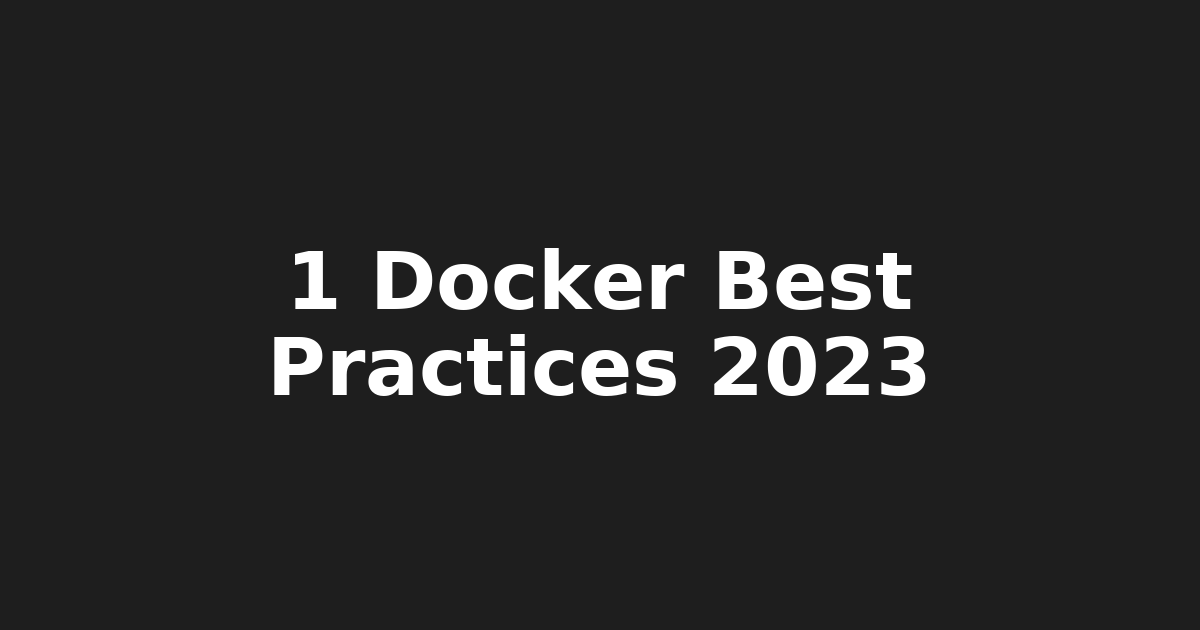1. Docker Best Practices 2023: Microservices & Cloud Optimization

🌐 Containerization Mastery in 2023: A Guide for Tech Enthusiasts 🚀
Hey there! Josh here from KeepItTechie. Today, we're gonna dive into the world of containerization with Docker, Kubernetes security, Linux performance optimization, edge computing, and serverless architectures. Let's get this party started! 🎉
🐳 1. Best Practices for Docker Containerization in 2023
containerization, docker, microservices
In the realm of modern software development, containerizing applications with Docker is a necessity, not an option. Here are my top tips to optimize performance, security, and scalability:
- Keep it light: Minimize image size by using multi-stage builds and removing unnecessary files before pushing images to your registry.
- Networking matters: Utilize Docker networks to isolate containers from the host system and provide more secure communication channels.
- Limit privileges: Run containers as non-root users and restrict their capabilities to minimize potential security risks.
- Secrets management: Use tools like Vault or Hashicorp's SSO for managing secrets securely across your container environment.
- Monitor resources: Keep an eye on CPU, memory, and storage usage with monitoring solutions like Prometheus and Grafana. 📊
🔒 2. Securing Kubernetes Clusters: Top Strategies in 2023
kubernetes, security, supply chain attacks
With the rise of container orchestration, protecting your K8s clusters from threats is crucial. Here are my recommendations for securing your precious data:
- Role-based access control (RBAC): Implement RBAC to control who has access to what resources in your cluster.
- Network policies: Use network policies to segment your cluster and enforce least privilege access between services.
- Pod Security Policies: Limit the capabilities of pods running on your cluster to minimize potential security risks.
- OPA Gatekeeper: Use this open-source policy engine to enforce Kubernetes policies consistently across your cluster.
- Regularly patch & update: Keep your cluster up-to-date with the latest patches and updates to protect against known vulnerabilities. 🛡️
💻 3. Optimizing Linux Performance for High-Load Applications
linux, performance optimization, system administration
System administrators managing high-load applications need their Linux systems humming like a well-oiled machine. Here are some tips to fine-tune your system:
- Tune the kernel: Adjust parameters like
nr_openandvm.swappinessto optimize performance for your workload. - Load balancing: Use tools like HAProxy or NGINX to distribute incoming requests evenly across your application instances.
- Caching: Implement caching solutions like Redis or Memcached to reduce database load and improve response times.
- Monitoring: Keep an eye on resource usage with tools like top, htop, or Prometheus to identify bottlenecks early. 📈
🌐 4. The Future of Edge Computing: Opportunities and Challenges
edge computing, IoT, distributed computing
With the increasing importance of IoT devices, edge computing is becoming a game-changer. Here's what you need to know about the future of edge computing:
- Low latency: Edge computing can reduce latency by processing data closer to the source, improving overall application performance.
- Data privacy: By processing sensitive data at the edge, organizations can maintain better control over their data and meet regulatory requirements.
- Infrastructure costs: Building and maintaining edge infrastructure can be costly, but the benefits often outweigh the costs in terms of performance improvements.
- Standardization: As more organizations adopt edge computing, standardizing protocols and technologies will become essential to ensure interoperability. 🌐
🚀 5. Comparing Serverless Architectures: AWS Lambda vs. Google Cloud Functions vs. Azure Functions
serverless, cloud computing, comparison
Serverless architectures are all the rage these days. Here's a breakdown of the three big players in this space:
- AWS Lambda: Offers generous free tier, strong ecosystem support, and seamless integration with other AWS services.
- Google Cloud Functions: Provides competitive pricing, good scalability, and strong performance in high-memory functions.
- Azure Functions: Offers a user-friendly development experience, reasonable pricing, and seamless integration with other Azure services.
Ultimately, the choice depends on your specific needs, budget, and existing ecosystem. 💭
Remember, as tech enthusiasts, we're always learning and adapting to new technologies. Stay curious, stay hungry, and keep KeepItTechie-ing! 🌟
Sources:
- Best practices for Docker containerization
- Securing Kubernetes clusters
- Optimizing Linux performance for high-load applications
- The future of edge computing
- Serverless architecture comparison
🙋♂️ This post was brought to you by Josh from KeepItTechie — helping you break into tech, one command at a time.
